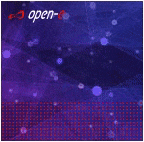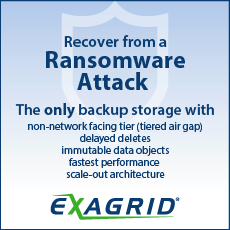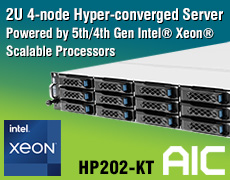… and Seagate’s Point of View
"HDDs will serve the bulk of laptop market for many years"
By Jean Jacques Maleval | January 28, 2011 at 3:05 pmSeagate Technology LLC has published a document called NAND Flash: Can It Meet the Growing Storage Capacity Demands of the Laptop PC Market?
Laptop PC Storage Capacity Growth
Continues Unabated
One exabyte of storage capacity equals 1 million terabytes, or 1 billion gigabytes. The total available market (TAM) for laptop PC hard disk drives worldwide in 2010 was 69 exabytes and is forecast to grow to 95 exabytes in 2011. That’s a lot of storage capacity. What’s more, the average capacity of a notebook hard drive is forecast to grow from nearly 300GB in 2010 to more than 350GB in 2011. Laptop users want more capacity, not less.
NAND flash memory
is the storage component of solid state drives
Conventional wisdom in some circles of the storage marketplace is that in the coming years solid state drives will begin to replace hard disk drives in significant numbers in laptop PCs. However, keep in mind that in 2010 the entire NAND flash memory industry had enough installed capacity to produce just over 11 exabytes of storage. More than 10 exabytes (93%) of that went to consumer devices such as smartphones, tablets and SD cards. Just 0.86 exabytes (7%) of that NAND was used in solid state drives.
NAND flash memory production capacity is forecast to grow to 21 exabytes in 2011, with about 2 exabytes (9%) going to solid state drives and the rest (91%) to smart phones and other consumer devices. The cost to build a megafab capable of producing 3.75 exabytes of nonvolatile NAND flash memory is $10 billion. What’s more, a megafab – the minimum commitment for any significant increase in NAND production – would take two to three years to ramp to full production. Smaller fabs would contribute little to meeting the enormous demand for laptop storage.
Can It Meet the Growing Storage Capacity Demands
of the Laptop PC Market?
Assuming all of that additional NAND is used for solid state drives, that $10 billion investment would produce enough flash memory to serve just 4% of the 95-exabyte laptop storage market projected for 2011. Spending $10 billion to buy 4% of notebook storage market share, or $2 billion in revenue, is not viable.
To serve the entire laptop PC storage market in 2010, a $170 billion investment in NAND flash memory fabs would have been required. In 2011, a $250 billion fab investment would be needed to meet projected hard disk drive capacity demand for all laptops. But $10 billion is just for the cost of the fab. It doesn’t include the NAND, operations, fab depreciation and other significant costs.
Worldwide installed fab capacity is expected to grow from 11.5 exabytes in 2010 to 21 exabytes in 2011, a staggering 82%. But remember, just 9%, or about 2 exabytes, of that NAND will go to solid state drives. Even at that impressive 80+% growth rate, with the vast majority of the NAND going to consumer devices, the yawning gulf between NAND flash memory production capacity for solid state drives and demand for laptop storage will continue to widen.
Whatever portion of megafab production capacity is devoted to NAND flash for SSDs, the return on investment would be difficult to justify given the relatively small available market for laptop SSDs. Any additional capacity would be better justified to serve the market for smartphones, tablets and other consumer products for one chief reason: NAND makers can maintain much higher yields and lower prices for consumer-grade NAND because its performance and reliability specifications are much less stringent than the requirements for laptop PCs.
The upshot: Hard disk drives will serve the bulk of the laptop market for many years to come as makers of solid state drive remain overstretched to meet ever-growing demand for laptop storage. While the bulk of worldwide demand for NAND flash is for consumer products such as MP3 players, cell phones and cameras, Seagate believes there is ample flash to support the opportunities Seagate sees for enterprise and hybrid solid state storage.
Note: Most of the market figures come from Gartner Forecast: NAND Flash Supply and Demand, Worldwide, 1Q09-4Q11, 4Q10
Update,December 2010)













 Subscribe to our free daily newsletter
Subscribe to our free daily newsletter

